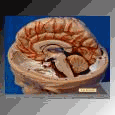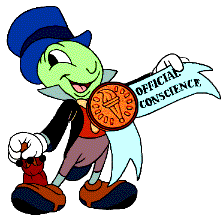David Stocks - Hypnotherapist
What is Hypnotherapy?
What Can Hypnotherapy do?
What Can Be Treated?
- - Weight Loss Treatment
- - Smoking Cessation
- - Anxiety
- - IBS
How Many Sessions?
Who Can Be Hypnotised?
What Happens in a Session?
- - Is it Spiritual?
- - Will I Be Unconscious?
- - Under His Power?
- - Exposing My Secrets?
What is Psychotherapy?
Advantages / Risks
Testimonials
Map & Directions
Corporate
Bookmark (IExplorer only)
What is Psychotherapy In Hypnosis?
Psychotherapy is a method of uncovering and dealing with traumatic memories. These memories can have a profound effect on how you feel about yourself and about certain situations, usually without you realising it. It is also often a child's emotions that are stored in these memories. Experiencing a child's dread, or guilt, etc., can be devastating and impossible to understand.
To understand what can go wrong, we must first describe how we store memories. The actual workings of the brain, and the complex interactions that convert this biochemical/electrical organ are even now only poorly understood. However, we can best describe it in terms of a simple model.
The Brain
 The brain is divided into two parts, the Left and the Right. It is also constructed a bit like an onion. The older, more primitive parts lie deep in the centre. The Cerebral Cortex is that part of your brain where your mind resides. It forms the outer layer on the top, and front part, of your brain. The dividing line through the centre of your brain cuts the Cerebral Cortex in two. This means that your mind sits in two separate places. On the left sits the Conscious Mind and on the right, the Unconscious Mind.
The brain is divided into two parts, the Left and the Right. It is also constructed a bit like an onion. The older, more primitive parts lie deep in the centre. The Cerebral Cortex is that part of your brain where your mind resides. It forms the outer layer on the top, and front part, of your brain. The dividing line through the centre of your brain cuts the Cerebral Cortex in two. This means that your mind sits in two separate places. On the left sits the Conscious Mind and on the right, the Unconscious Mind.
The Conscious Mind
This is where the logical, thinking, talking part of you lies. There is no emotion here. This is where you plan, criticise, work out. Only this side has language, and you think in words.
The Unconscious Mind
This is where we feel - where your emotions, needs and wants are. This side has NO language - you think in "lumps of thought". (Sorry, but I can't think of a better expression.)
How Do We Learn?
We all hold in our brains a Model of the universe; the way things are. It is the sum total of all our knowledge and experience - our long-term memory. All memories are a mixture of fact and emotion. This means that both sides of the brain contribute to everything we learn.
It is our capacity to understand our environment that marks us out from all other animals. (Chimpanzees make and use tools, but they don't dominate the planet). In the days before civilisation, this kept us alive. E.g. we could recognise animal footprints and the direction in which it was going. (Pretty useful if it happens to be a lion.) The day we got this model wrong could well have been the day we got eaten! We are the descendants of people who were best at understanding their environment.
We follow one simple rule: Check the facts thoroughly before adding them to the Model.
The Conscious Mind is best equipped to check the facts. It tries very hard to reject all new information. When it is satisfied with the facts, it passes them over to the Unconscious Mind to add some emotion. (Note that this emotion could be simply "dead boring" - there is always some emotion.)
The next step is to add the new knowledge to the Model. Because the Unconscious Mind is holding the new fact - it ends up its job to put it away. This can't be done straight away - the Model is so complex that you have to "shut down" your brain before you update it. This is one reason why you sleep. The Unconscious Mind puts the new knowledge into an "In Tray", or short term memory. When we are asleep, the Unconscious Mind takes this new knowledge from the In Tray and adds it to the Model.
| Conscious Mind | Unconscious Mind | ||
| Logical, Critical | Emotions, Needs, Wants | ||

|

|

|
 In-Tray (Below) |
| Check & Pass to Unconscious Mind |
Add Emotions & Store in the In-Tray |
||
| Memory System | |||

|

|

|
|
| Whilst asleep - process the contents of the In-Tray and store in the Model | |||
| Conscious Mind | Unconscious Mind | Memory System | ||||
| Logical, Critical | Emotions, Needs, Wants | Short-Term | (Sleep) | Long-Term | ||

|
|

|
|

|
|

|
| Check & Pass to Unconscious Mind |
Add Emotions & Store in the In-Tray |
Whilst asleep - process the contents of the In-Tray and store in the Model | ||||
NB this also means that the Unconscious Mind knows how to "work" the memory system. It can access everything that's ever happened to you.
The Conscious Mind doesn't even need to learn how to do this - it simply gets the Unconscious Mind to retrieve all the information for it.
For example, if we are looking at a cup, the Conscious Mind sends a request to the Unconscious Mind - "Tell me everything I know about a cup". The Unconscious Mind looks first at the Model and then checks in the In Tray for any new knowledge. It "experiences" the emotional content, and passes the factual information over to the Conscious Mind.
The information in the Model is all cross-referenced and indexed and so it can go straight to the relevant entries. However, the information in the In-Tray is more like a set of unrelated cards. The Unconscious Mind has to look at every card to see if there is any new information about a cup.
What Is a Repressed Memory?
We sometimes wish we didn't know what we know! For example, let's say we discover that "Mum doesn't love me any more!" The Conscious Mind has worked out that this is why Mum shouted at me today, when I had done
nothing wrong. This new thought is passed to the Unconscious Mind to have the emotion added. This new thought, with a huge mass of negative emotion, is then passed to the In-Tray.
This is where the problems start. To a child, this is about as traumatic as it can be. "My whole life has just been turned upside down. After all, who will look after me, feed me and keep me safe? There must be something wrong with me if even my Mum can't love me!"
The Conscious Mind realises that it would have been better not to think that thought. Things were better 10 minutes ago. "I don't want it to be this way!" Apparently you can't delete memories and thoughts, so it does the next best thing: it instructs the Unconscious Mind not to add it to the Model of the universe. It is to pretend that it never happened.
The Unconscious Mind does what it is told. It doesn't take the thought out of the In-Tray to add it to the Model. It simply leaves it there! It adds a big red X and a notice: "Information not to be passed to the Conscious Mind". It stays in your short-term memory for the rest of your life, as fresh as the day it was put there! Every time the Unconscious Mind requests information from the memory system, the Unconscious Mind finds the repressed memory and feels the associated emotion!
It also "knows" that information stored here is new and overwrites all "older" knowledge. It does this hundreds of times a second and so you constantly feel the anxieties from these repressed memories. The Conscious Mind is often also completely at a loss to know why we feel the way we do!
Click to See Reviews:
Rating: 4.95 out of 5 (102 reviews)
List of Pages:-
Introduction
David Stocks - Hypnotherapist
What is Hypnotherapy?
What Can Hypnotherapy do?
What Can Be Treated?
- - Weight Loss Treatment
- - Smoking Cessation
- - Anxiety
- - IBS
How Many Sessions?
Who Can Be Hypnotised?
What Happens in a Session?
- - Is it Spiritual?
- - Will I Be Unconscious?
- - Under His Power?
- - Exposing My Secrets?
What is Psychotherapy?
Advantages / Risks
Testimonials
Map & Directions
Corporate
